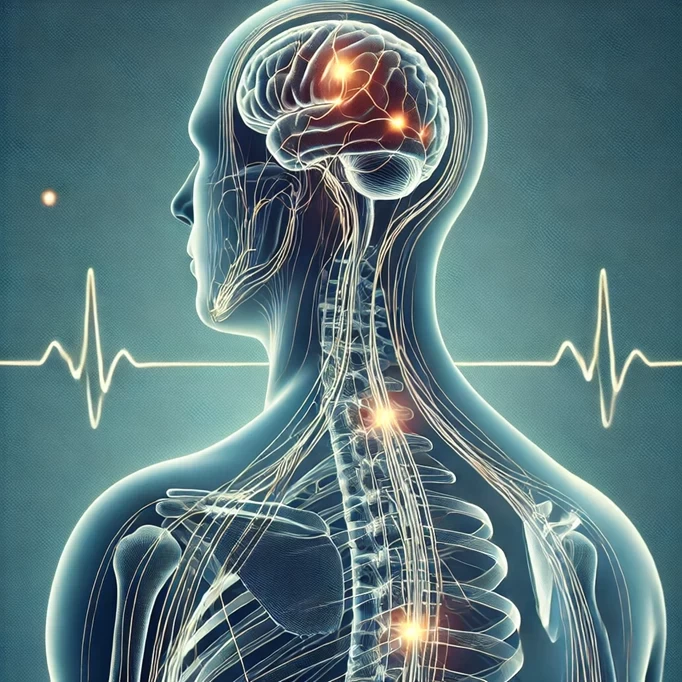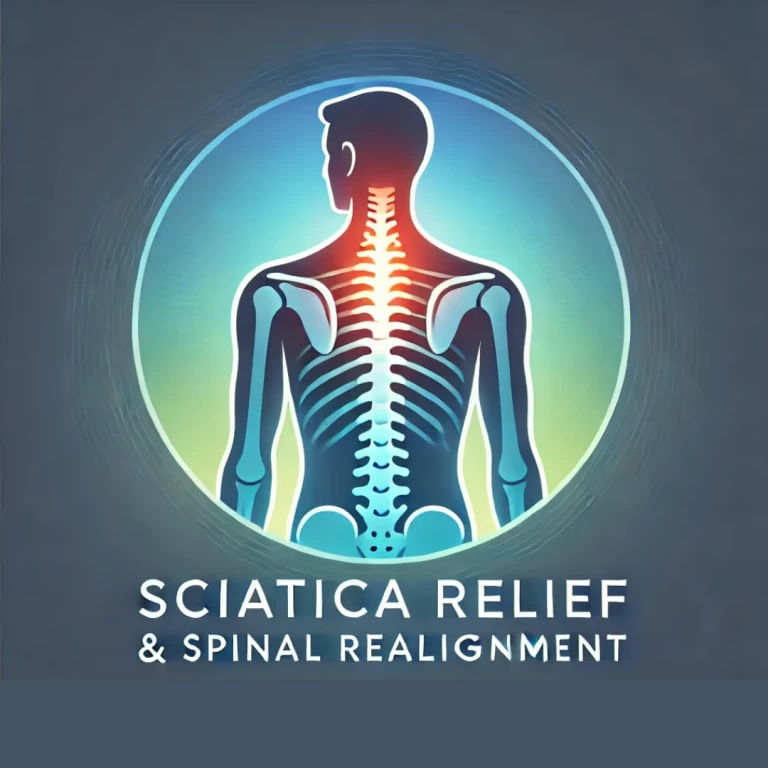
Upper Cervical Care for POTS and Dysautonomia: A Natural Approach to Nervous System Balance
If you suffer from Postural Orthostatic Tachycardia Syndrome (POTS) or Dysautonomia, you know how life-altering these conditions can be. The symptoms—ranging from dizziness, brain fog, fatigue, heart palpitations, and fainting—can make even simple daily activities feel overwhelming. Conventional treatments often focus on managing symptoms rather than addressing the root cause, leaving many patients searching for long-term solutions.
By downloading the Digital Patient Chart mobile app you can better control your patient portal.
What if there was a natural way to support your nervous system and help restore balance to your body? Upper cervical chiropractic care has been gaining attention as a potential avenue for POTS and Dysautonomia symptom relief, especially for those whose symptoms are linked to brainstem dysfunction and autonomic nervous system imbalance.
As a Hiawatha upper cervical chiropractor, I have seen firsthand how atlas misalignment can impact nervous system function, blood flow, and overall autonomic regulation. In this article, we will explore:
- What POTS and Dysautonomia are
- How the autonomic nervous system controls vital functions
- The connection between the atlas (C1) vertebra and the nervous system
- How upper cervical chiropractic care can help regulate autonomic function
- Why correcting atlas misalignment is essential for those with POTS and Dysautonomia
Understanding POTS and Dysautonomia
What Is Dysautonomia?
Dysautonomia is a broad term for disorders that affect the autonomic nervous system (ANS), which regulates:
✔ Heart rate
✔ Blood pressure
✔ Digestion
✔ Temperature regulation
✔ Respiration
When the ANS is dysregulated, it can cause widespread symptoms and make it difficult for the body to maintain homeostasis.
What Is POTS?
Postural Orthostatic Tachycardia Syndrome (POTS) is one of the most common forms of Dysautonomia. People with POTS experience an abnormal increase in heart rate when they move from a lying to a standing position.
Symptoms of POTS Include:
- Dizziness and lightheadedness
- Heart palpitations or racing heart (tachycardia)
- Extreme fatigue
- Brain fog and difficulty concentrating
- Nausea and digestive issues
- Cold hands and feet due to poor circulation
- Exercise intolerance
- Fainting or near-fainting episodes
These symptoms occur because the body struggles to regulate blood flow properly, leading to poor oxygen delivery to the brain and extremities.
While POTS and Dysautonomia can have multiple causes, one overlooked factor is upper cervical misalignment, which can directly impact brainstem function, blood flow, and autonomic regulation.
The Autonomic Nervous System and the Upper Cervical Spine
The autonomic nervous system (ANS) is divided into two branches:
1. Sympathetic Nervous System (Fight-or-Flight Response)
- Increases heart rate and blood pressure
- Prepares the body to handle stress
2. Parasympathetic Nervous System (Rest-and-Digest Response)
- Slows heart rate
- Promotes digestion and relaxation
The brainstem plays a vital role in regulating both branches of the autonomic nervous system. It receives, processes, and sends out signals to help the body maintain proper heart rate, blood pressure, and circulation.
How the Upper Cervical Spine Affects Autonomic Function
The atlas (C1) and axis (C2) vertebrae are located at the top of the spine, directly protecting the brainstem. When these vertebrae become misaligned—due to injury, poor posture, or repetitive stress—they can create neurological interference, disrupting communication between the brain and body.
This interference can contribute to POTS and Dysautonomia symptoms by:
✔ Affecting blood flow to the brain (leading to dizziness, brain fog, and fainting)
✔ Altering vagus nerve function, which helps regulate heart rate and digestion
✔ Triggering sympathetic overactivity, keeping the body in a constant state of “fight or flight”
If the atlas is out of alignment, the body may struggle to properly regulate heart rate, circulation, and autonomic function, worsening POTS and Dysautonomia symptoms.
How Upper Cervical Chiropractic Can Help POTS and Dysautonomia
Upper cervical chiropractic care focuses on gentle, precise adjustments to the atlas (C1) and axis (C2) vertebrae to restore proper neurological function. Unlike general spinal adjustments, upper cervical adjustments are highly specific and do not involve twisting or cracking the neck.
At my Hiawatha upper cervical chiropractic office, we use:
✔ Advanced diagnostic imaging for spinal health to detect precise misalignments
✔ Gentle, non-invasive Knee Chest Upper Cervical adjustments
✔ Neurological assessments to track improvements in autonomic function
Benefits of Upper Cervical Chiropractic for POTS and Dysautonomia
✅ Improved Blood Flow to the Brain
- A misaligned atlas can restrict blood flow to the brain, contributing to dizziness, brain fog, and fainting episodes.
- Correcting atlas misalignment helps restore normal circulation, reducing lightheadedness and cognitive issues.
✅ Better Nervous System Regulation
- Adjustments to the upper cervical spine can help balance the autonomic nervous system, reducing sympathetic overactivity (which can cause tachycardia and high blood pressure).
- Patients often report feeling calmer, less anxious, and more balanced after care.
✅ Enhanced Vagus Nerve Function
- The vagus nerve (which helps control heart rate and digestion) passes near the atlas vertebra.
- Misalignment can irritate the vagus nerve, leading to POTS-related symptoms like rapid heart rate, digestive distress, and poor circulation.
- Upper cervical care can help restore proper vagus nerve function, supporting heart rate regulation and digestion.
✅ Reduced Neck Tension and Brainstem Pressure
- Many POTS patients experience chronic neck tension, headaches, and tight muscles.
- By correcting spinal misalignment, upper cervical adjustments can relieve muscle tension, reducing discomfort and improving nervous system function.
Why Choose Upper Cervical Chiropractic for POTS and Dysautonomia?
Many patients with POTS and Dysautonomia travel hours to receive upper cervical care because of its gentle, targeted approach to nervous system health.
Our clinic in Hiawatha, IA, is one of only a few upper cervical chiropractic offices in Iowa, serving patients from:
- Cedar Rapids
- Davenport
- North Liberty
- Burlington
- Iowa City
- Coralville
- Muscatine
- Kalona
- Maquoketa
- Southeast Iowa
If you’ve been searching for a natural, non-invasive approach to help regulate your autonomic function and improve POTS and Dysautonomia symptoms, upper cervical chiropractic care may be the solution you’ve been looking for.
Final Thoughts: A Holistic Approach to Autonomic Balance
POTS and Dysautonomia are complex conditions, but upper cervical misalignment is often an overlooked factor contributing to autonomic dysfunction. By restoring proper atlas alignment, we can help improve blood flow, nerve communication, and autonomic stability, offering lasting relief without medication or invasive treatments.
If you're struggling with POTS, Dysautonomia, dizziness, or heart rate irregularities, consider scheduling a consultation at our Hiawatha upper cervical chiropractic office to see how precise, gentle adjustments can help restore balance to your nervous system.
Your journey to better health, improved circulation, and nervous system balance starts here!








Leave a comment